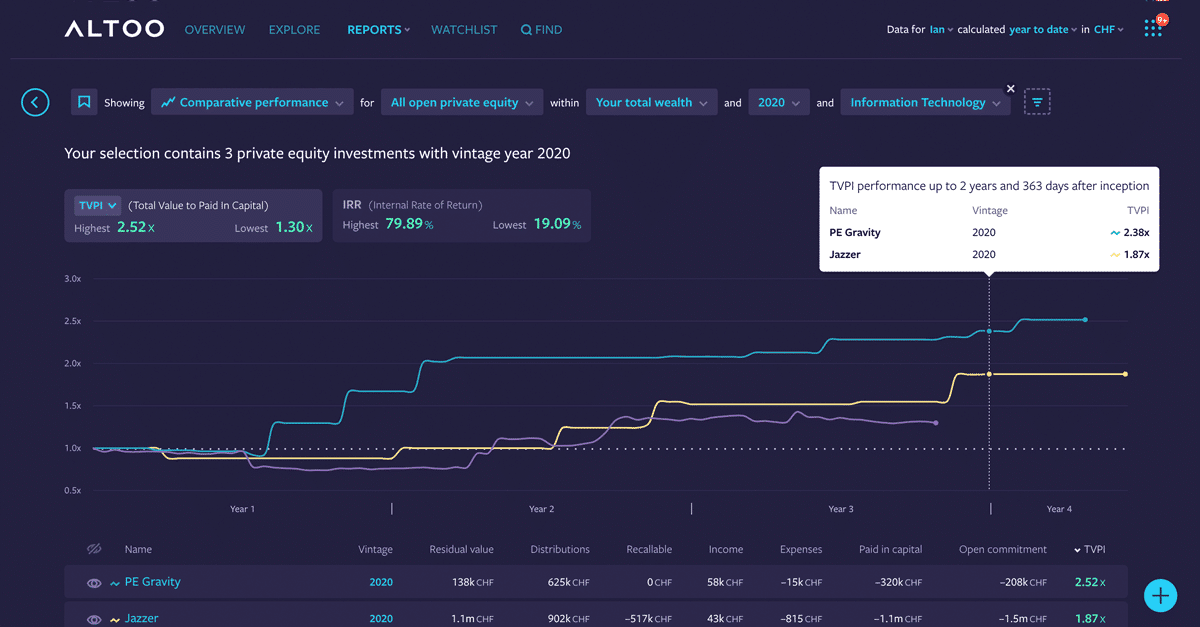Such a transformation is reshaping investment avenues for ultra-high-net-worth individuals (UHNWIs) and high-net-worth individuals (HNWIs). Market opportunities and changes in regulatory frameworks are driving this new dynamic, which presents both challenges and opportunities for astute investors. By filling the gaps left by traditional banks, private equity firms introduce a new environment for UHNWIs and HNWIs. In this landscape, balancing the allure of novel investment opportunities with associated market risks becomes crucial. Consequently, wealthy individuals may need to reconsider their money management and investment strategies. The importance of flexibility and making informed choices is underscored in a sector known for its complexity and constant evolution.
In this article, discover how private equity is reshaping the banking industry, offering new investment opportunities for UHNWIs and HNWIs. Unpack the latest trends, significant case studies like Ares Management, and the evolving regulatory landscape in this comprehensive analysis.
How Private Equity is Changing Banking?
In recent years, private equity (PE) firms have significantly expanded their presence in the banking sector, a trend reflected in entities such as Ares Management. This shift represents a fundamental change in the financial landscape, with direct implications for UHNWIs and HNWIs.
Ares Management: A Case in Point
Ares Management serves as a prominent example of how private equity firms are diversifying into banking roles. Traditionally known for their investments in various companies and assets, firms like Ares have begun to offer services typically associated with banks, including lending and credit facilities. Firms like Ares Management serve as excellent examples of how private equity in banking is a significant shift in the financial landscape. For UHNWIs and HNWIs, this shift could potentially open up a new realm of possibilities, with its own unique set of challenges and considerations. Moreover, this expansion signals a more profound shift in the financial ecosystem.
Wealth Aggregation: Simple, Dynamic, and Secure Beyond Compare. Discover the Altoo Wealth Platform!
Key Drivers Behind the Shift
Two primary factors have spurred this evolution:
Regulatory Changes
The global financial crisis of 2007–2008 was a key event, leading to significant regulatory changes in the banking sector. In response to the crisis, governments and regulatory bodies around the world introduced stringent regulations aimed at stabilising the financial system and minimising systemic risks. Two notable examples of these regulatory changes are:
01 Dodd-Frank Wall Street Reform and Consumer Protection Act (2010) was enacted in the United States in 2010. This comprehensive set of financial regulations was designed to prevent the recurrence of a similar crisis. Among its many provisions, the Dodd-Frank Act imposed stricter capital requirements and risk management protocols on banks. It also introduced the Volcker Rule, which limited the types of speculative investments banks could engage in, significantly impacting their profit-making strategies.
02 Basel III (Fully Implemented by 2019) is a global regulatory framework that the Basel Committee on Banking Supervision developed and introduced in stages beginning in 2010. It primarily focused on improving the banking sector’s ability to absorb shocks arising from financial stress, enhancing risk management, and strengthening banks’ transparency and disclosure. The framework raised the minimum capital requirements and introduced new regulatory requirements on bank liquidity and leverage.
These regulatory changes, while crucial for the stability of the global financial system, led traditional banks to reevaluate their business models, particularly in areas like lending and credit provision. As banks adjusted to these new constraints, private equity firms found an opportunity to expand their role in the financial market, stepping in to fill the gaps left by traditional banks, especially in offering lending and credit services to businesses and individuals. This shift has been particularly significant for UHNWIs and HNWIs, who are always on the lookout for robust and diverse investment opportunities.
Banking Sector Challenges
Traditional banks have faced various challenges, including low interest rates, which have squeezed profit margins, and increased competition from fintech companies. These challenges have led banks to retreat from certain market segments, leaving a vacuum that private equity firms have been quick to exploit.
Impact on UHNWIs and HNWIs Investment Landscape
Private equity (PE) firms are becoming more involved in banking, which has a big effect on investments for ultra-high-net-worth individuals (UHNWIs) and high-net-worth individuals (HNWIs). These investments are different from traditional banking investments.
Private Equity versus Traditional Banking
Private equity’s foray into banking brings a distinct approach to investment. Unlike traditional banks, which tend to be more conservative in their investment strategies, PE firms often pursue higher risk-reward profiles. This shift could potentially provide UHNWIs and HNWIs with access to a broader range of investment opportunities, many of which may offer higher returns compared to conventional bank investments.
Diversification of Investment Portfolios
One key impact of this trend is the diversification of investment portfolios. UHNWIs and HNWIs, traditionally reliant on banks for investment products like bonds and standard loans, now have the option to explore alternative investments offered by PE firms. These can include direct investments in private companies, real estate, and specialised lending opportunities. This diversification can potentially lead to more robust portfolios that are better suited to withstand market fluctuations.
However, it’s crucial to acknowledge the increased risks associated with some PE investments. Private equity frequently entails higher risks in addition to higher returns, such as decreased liquidity and increased market volatility. Therefore, UHNWIs and HNWIs must carefully consider their risk tolerance and investment horizons when exploring these new opportunities.
Case Studies: Private Equity Successes
In 2023, the private equity landscape witnessed several notable lending initiatives, showcasing the sector’s growing influence in the financial market. These initiatives have had a significant impact on the investment strategies and portfolios of UHNWIs and HNWIs.
Toshiba: $15 Billion Take-Private
In March 2023, Japan Industrial Partners led a noteworthy take-private deal for Toshiba, valued at $15 billion. This kind of deal usually gives UHNWIs and HNWIs the chance to invest in well-known companies that are going from being public to private. The strategic reorganisation and focused management that often come with these changes can make the investments very profitable.
Qualtrics: $12.5 Billion Take-Private
The $12.5 billion take-private of Qualtrics in March 2023, overseen by Silver Lake and the Canada Pension Plan Investment Board (CPPIB), is yet another significant development in the private equity sector. Investments in such deals can be attractive to UHNWIs and HNWIs due to their potential for high growth and the opportunity to influence company direction post-acquisition.
Worldpay: $11.4 Billion Leveraged Buyout
In July 2023, GTCR spearheaded a $11.4 billion leveraged buyout of Worldpay. Leveraged buyouts allow private equity firms to acquire companies primarily through borrowed funds, which can lead to high returns on equity for investors, including UHNWIs and HNWIs. However, these investments also carry higher risks due to the significant use of debt financing.
Regulatory Considerations and Risks
The regulatory landscape for private equity in banking has undergone significant changes in 2023, marking a departure from the industry’s previously ‘lightly regulated’ status. With the U.S. government becoming more assertive in regulating all ‘private funds’ including private equity, hedge funds, and venture capital, new regulations are reshaping how these entities operate.
Key changes include the requirement for private funds to issue quarterly financial statements detailing the fund’s performance, fees, and expenses and more stringent reporting requirements for illiquid funds, which most private equity firms fall under. Additionally, annual audits are now mandatory, and restrictions have been placed on practises like using ‘side letters’ for preferential treatment of certain investors.
These regulatory changes are significant, being described as the most substantial in over a decade. They affect the operations of private equity firms, including aspects like offering better redemption terms through ‘side letters’ and managing compliance costs. The new rules could lead to higher operational costs and impact the ease of starting new private equity firms.
These changes imply a need for heightened diligence and awareness of the compliance and regulatory environment surrounding their investments in private equity. The growth of the ‘private funds’ industry, now exceeding $25 trillion in assets and surpassing the U.S. commercial banking sector, highlights the importance of these regulatory considerations. The involvement of varied investors, including public pensions, in private equity and hedge funds has also drawn increased regulatory scrutiny, particularly regarding fees and performance.
Future Outlook and Opportunities
The future of private equity in banking appears poised for continued growth and innovation. With traditional banking models evolving and the global financial landscape shifting, private equity firms are likely to play an increasingly significant role in providing capital and financial services. This evolution could open up new opportunities for UHNWIs and HNWIs, such as access to alternative lending platforms, innovative financial products, and diversified investment portfolios. However, these opportunities will also require careful navigation of the associated risks and a keen understanding of market dynamics.
We think you might like
We are delighted to announce the launch of our latest feature: Private Equity reporting. Designed to equip you with a comprehensive set of tools and metrics to help you gain deeper insights into your investments and make better financial decisions. All your Private Equity investments at a glance Our new report provides you with a […]







